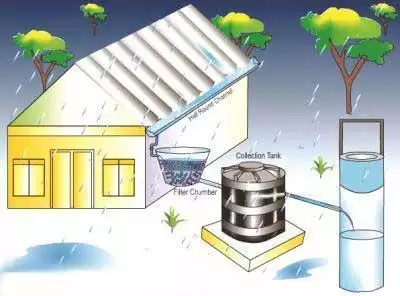Hit by four consecutive droughts, some residents of the city have come together to install a variety of rainwater harvesting systems in their respective homes and private townships.

Aurangabad: Hit by four consecutive droughts, some residents of the city have come together to install a variety of rainwater harvesting systems in their respective homes and private townships.
In a bid to encourage rainwater harvesting among residential societies, schools, colleges and industrial areas, an NGO, engineering college students and the Aurangabad Plumbing Association have joined hands to launch an awareness drive.
They have started rainwater harvesting work since the summer season and implemented the technology at more than 200 sites.
The work to install the harvesting equipment is in progress at a housing society with 99 flats and four shops in the Beed bypass area.
“As the Aurangabad Municipal Corporation does not have drinking water supply pipeline in the area, the citizens are supplied water by the Maharashtra Industrial Development Corporation (MIDC). But the charges levied by the MIDC come to Rs 1 lakh per month,” said Chandrakant Deshpande, the housing society’s joint secretary.
“We also have a borewell, but the water pressure and its quantity has reduced tremendously. If we continue to pump out water, it is sure to run dry soon. As residents, we must ensure that we give back what we take from the ground. To help raise the table level of the falling underground water, the residents decided to contribute Rs 1 lakh to install rainwater harvesting system in our society,” he said.
“Rainwater is found running off to the street leading to a lot of wastage besides flooding of the roads. The primary objective of rainwater harvesting is to inject large quantities of water into the soil in order to sustain both the quality and quantity of ground water. At places where this is not possible, constructing percolation pit/recharge well and recharge bore pits or a combination of these two can solve the purpose,” Prashant Patil Awsarmal, a civil engineer and a member of NGO Jal Kranti.
![]()
Photo Credit: Sanicon-wordPress.com
“Catching rainwater where it falls for use during non-monsoon months is called rainwater harvesting. This can be done in two ways – by diverting rainwater into tanks/ponds etc or ground water by ingesting it into the soil,” said Balasaheb Bhosale, the secretary of Aurangabad Plumbing Association.
“We started the campaign three months ago and have already implemented the project at nearly 200 sites,” Awsarmal said, adding, “The aim of the organisation is to create awareness and motivate people to implement rainwater harvesting. If this method is adopted by the masses, it would do wonders for the overburdened water network in the city.”
Bhosale said, “When we observed that people were interested to implement the system but were unaware of the methodology, our association decided to provide them technical and labour support based on the no-profit, no- loss method. We design the project, provide property owners assistance to buy materials such as pipes and filters at economical rates and supervise the work.”
“It is high time that rainwater harvesting is made mandatory for every property holder to combat water scarcity,” Awsarmal added.
Vardhman Envirotech
India’s Passionate rainwater company
This article is published on: The Times of India, 29 June, 2016
We would like to spread this for the benefit of fellow Indians.
